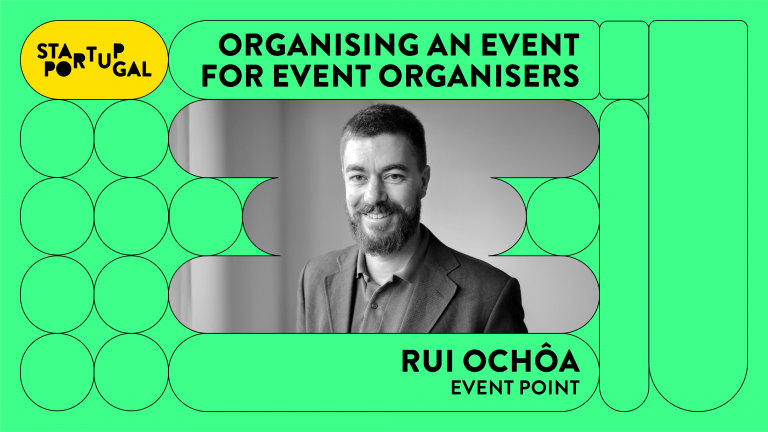Getting Up Close: How to Make Impact Measurement More Efficient, by Inês Sequeira

Getting Up Close: How to Make Impact Measurement More Efficient
Written by Inês Sequeira, Founder and Director at Casa do Impacto
The concept of Impact Measurement can be a little daunting for those who don’t yet think of it as “personal”. At Casa do Impacto, we made the decision to accept it and today we have a taboo-free relationship with this tool that guides our lives and guarantees efficiency throughout.
We are referring to the process of analysing, calculating and monitoring changes, both positive and negative, resulting from an intervention, initiative, programme, project or organization. When measuring, it is essential to have a correct understanding and application of the logic model to the specific organization or project, in order to measure the impact on the problem that gives rise to the social intervention and the creation of value for society.
As an Impact Entrepreneurship hub that aims to promote systemic change, which is only possible in the long term, the monitoring and consequent evaluation of the different initiatives is vital. Impact Measurement is the tool we have been implementing to better guide our decisions and understand in an increasingly informed way, through concrete data, whether we are going in the right direction. It forces us to constantly self-analyze and define strategies to maintain the consistency and quality of the impact we make, as well as coherence in long-term sustainability.
Impact Measurement and its management play a crucial role in the context of sustainable development in that the more data public or private decision-makers have, the more informed and responsible their decision-making process will be. However, this mechanism is not just about materializing the moral responsibility of institutions; implementing an impact measurement and evaluation system brings advantages such as competitive differentiation, access to funding, innovation and identification of new business opportunities, greater efficiency and credibility.
At present, the data culture is still timid, which generalizes the idea of a lack of transparency in various sectors of society. The different methodologies inherent in measurement make it difficult to define a rule that can be applied to all organizations, which nevertheless makes the tool more comprehensive and adaptable to the different activities and specific interventions that an organization may want to evaluate. It is essential to recognize the complexity and subjectivity involved in Impact Measurement, requiring the need for flexible approaches to different contexts and objectives.
Design and implementation
The design of an impact measurement and evaluation system can vary, but for an entrepreneur or startup, the process typically involves four steps:
1st – Planning:
- Defining the strategy: clarifying the objectives and purpose of the Measurement process. Organizations need to identify what they want to achieve and set clear targets for this;
- Stakeholder involvement: identify the relevant stakeholders and involve them in the process from the outset, thus understanding their perspectives, priorities and expectations;
- Planning the approach: Developing a comprehensive plan for the entire Measurement process: selecting appropriate methodologies, defining outcomes, establishing data collection methods and setting deadlines.
2nd – Collection:
- Data collection: gathering the relevant data to assess its social value. This phase is based on implementing the data collection methods outlined in the plan, such as questionnaires, interviews, focus groups, document reviews and secondary data analysis;
- Data storage and management: Organizing, storing and analysing the data using appropriate tools and techniques.
3rd – Analysis
- Impact assessment: Organizations need to analyse the data collected to assess its impact. In this analysis, they assess the results and impacts of their activities, identify strengths and weaknesses and understand the factors that contribute to or hinder the achievement of defined goals.
4th – Continuous improvement and communication:
- Communication: communicating your results effectively to your stakeholders;
- Learning and Improvement: Continuous learning and improvement are key to maximizing social impact. They reflect on the results of the measurement process, identify lessons learned and implement changes to improve effectiveness and efficiency over time.
The design and implementation of an impact measurement and management system can become superfluous if there is no integration of a data culture among decision-makers so that impact accompanies the organization’s strategy and macro planning and is not seen as a process that is sidelined by compliance issues. In addition, measurement cannot be limited to the financial amount raised or the definition of “Unicorn”. The efficiency and size of the Impact are two authoritative factors that validate the steps that will allow us to see if we are on the (right) path to achieving the ultimate goal which, in our case, is the much sought-after systemic change that we want to achieve by solving social and environmental problems.
There needs to be a general willingness to get to know Impact Measurement personally and to start treating it as your own.
If you’re ready to take that step, Social Value International’s guide is a good place to start.
If you’re still on the fence, perhaps 55+, Casa do Impacto’s resident startup, can convince you otherwise with its Impact Assessment and Reporting Guide 2020-2023.
Other blog posts



